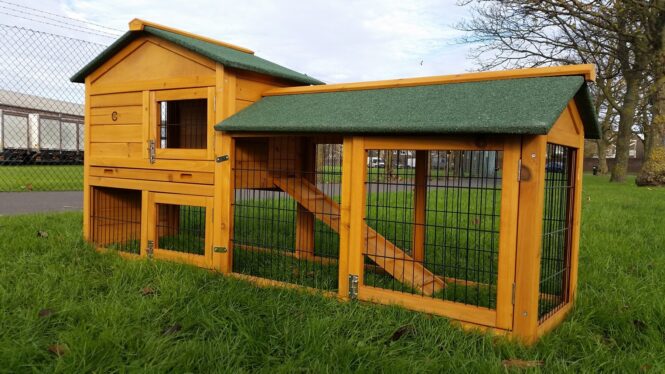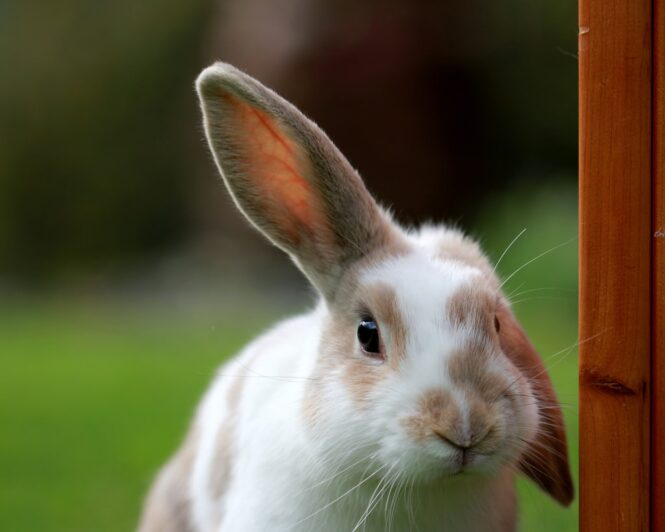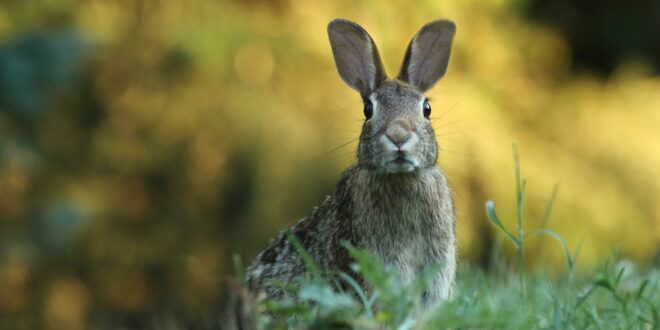Probably the most common type of rabbit hutch is a wooden one because of the many useful properties it possesses. However, we cannot generalize this story and it is necessary to emphasize that the material itself does not always indicate the quality of the hutch. Some wooden hutches are simply better than others, so this varies depending on each individual hutch.
Also, some people prefer to use all wire cages because they find them more suitable for their rabbits. However, if you are still in doubt and considering which option would suit you better, then the first step is to get better informed about the different types of hutches and find out the advantages and disadvantages of each material. Why are rabbit hutches made of wood? You will find out below.
Wooden hutches – what are the main disadvantages?

Probably the first type of hutch that most people use for their rabbits is the wooden one. They can be made really quickly and easily, and you only need a few boards, hardware, wires, and a little goodwill. However, although this option may seem very practical and convenient, the fact is that it comes with a set of disadvantages that can be a serious obstacle if you do not take them into account in time.
To begin with, keep in mind that rabbits pee, and that the consequence of this process is the development of the smell of ammonia. And really, the main disadvantage of these hutches is the fact that after a while, a very unpleasant smell develops which is permanently absorbed into the wood.
Secondly, even though they pee on wood, that doesn’t stop rabbits from thinking it’s a good idea to bite wood, because it’s still one of their favorite things. After a while, this leads to serious damage that is difficult or impossible to repair later, so you will have to make a new hutch or take a lot of time to repair the old one.
The next thing that is also quite unfavorable when it comes to wooden hutches is the wire that is easily pulled from those places where it was not properly anchored. This means more work for you and the need to set aside time and energy to reset everything up in a wooden rabbit hutch. And when the hutch is wet and stinky from a rabbit pee, it’s not exactly the most fun thing to do.
Another disadvantage of wooden rabbit hutch is that rabbit feces tend to stay in the corners. Once their feces get stuck in the corners of the hutch, and then their pee wets it and the rabbits trample it further, you get a recipe for impurities that are simply impossible to remove. No matter how hard you try, you will probably not succeed, and this can both lead to your frustration and put your rabbits at health risk. Why? Because they can be infected by parasites that live in their poop.
When we talk about all-wire cages, the rabbit poop falls to the ground and this interrupts the life cycle of the parasite. On a daily basis, rabbits can be exposed to small amounts of coccidiosis parasites in the gut without leading to a dangerous infection. However, when it comes to wooden hutches, rabbits are often exposed to their feces to an increased extent, which after a while leads to their immune system drop and serious infection. This is especially present when you feed them in wooden hutches, where they easily swallow the parasite, which further leads to damage to internal organs and disease.
So, why are rabbit hutches still made of wood?

Although we have previously listed some of the main disadvantages of wooden hutches, it is important to know that some people still prefer them. And that’s perfectly fine, because they also offer a certain set of benefits that are crucial with some rabbit breeders. In addition to being easy to make, they can be a much better choice for special breeds of yawns (for example, for French rabbits or for Belgian and English rabbits that are recognizable for being very active). They simply do much better on wooden surfaces, so wooden hutches can be a far better choice for them.
Also, when you are aware of all the shortcomings of wooden hutches you can take the necessary measures to reduce or eliminate them completely, if possible. For example, when you know that rabbits tend to call it wooden hutches, you may find some distraction that will ensure that rabbits have fun with it, instead of biting their wooden hutch. Today, you can find a number of chew toys on the market, which is a great alternative, because it gives the rabbit the desired satisfaction without damaging its living space.
Second, it is possible to come up with a wooden hutch design that protects the wood from urine. If you achieve this, you will also achieve the prevention of unpleasant odors, which is a big plus. Also, nowadays there are designs that allow all the feces to be taken away from the wood, which ensures that it doesn’t get stuck in the corners and poses a danger to the rabbit. With a little creativity and goodwill, you can optimize wooden hutches to the maximum and create maximum comfort for your rabbit.
Every rabbit breeder has their own views on which materials for hutches are best and then chooses them because they only want the best for their animal. The best way to make this decision is to find out in detail about the different types of hutches and figure out the pros and cons of each. You can read more about it on the AIVITUVIN blog.
Conclusion: Wooden rabbit hutches are still very popular these days, despite coming with a set of flaws. The fact is that the material itself does not always say much about the quality of the hutches, because the design of each individual hutch can vary. In case you are raising rabbits, the best idea is to educate yourself about different materials and different types of hutches and decide for yourself which benefits are best for you, in order to provide maximum comfort to your rabbit.
 Imagup General Magazine 2024
Imagup General Magazine 2024



